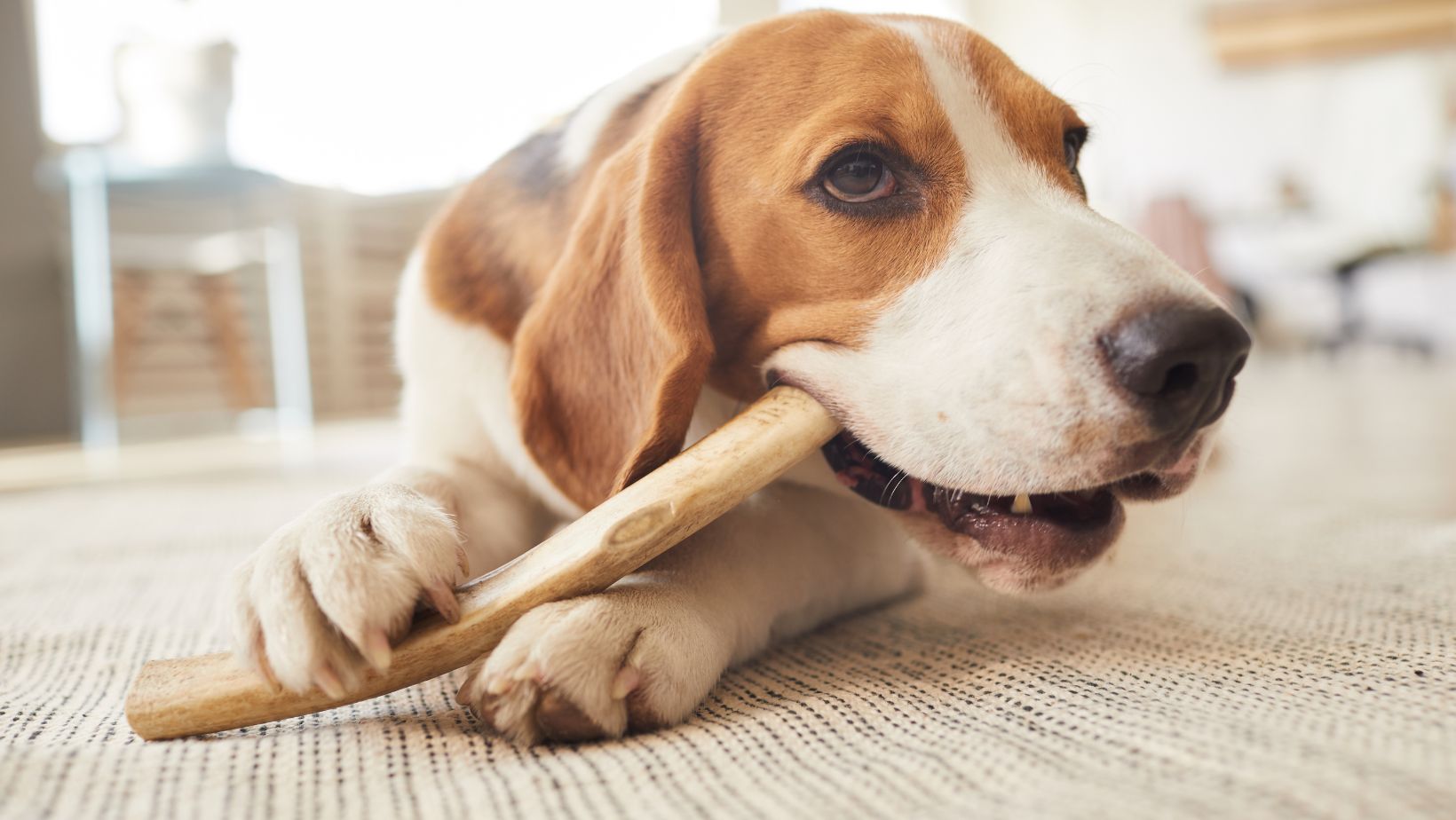Training a dog to stop chewing on things can be quite a challenge for pet owners. It’s frustrating to come home and find your favorite pair of shoes in tatters or see teeth marks all over the furniture. But fear not; with some patience and consistent training, you can teach your furry friend to curb their chewing habits.
One important aspect of training is understanding why dogs chew in the first place. Puppies, especially, go through a teething phase where they feel the need to chew to alleviate discomfort. Additionally, dogs may chew out of boredom or anxiety. By identifying the underlying cause, you can tailor your training approach accordingly.
To start teaching your dog not to chew on inappropriate items, provide them with plenty of appropriate alternatives, such as chew toys or bones. Make sure these items are enticing by using treats or engaging textures that will keep their attention focused on those objects instead of household items.
How To Get A Dog To Stop Chewing Stuff
Common Reasons Dogs Chew
When it comes to understanding why dogs chew, it’s important to recognize that chewing is a natural behavior for our canine companions. Just like humans use their hands to explore the world, dogs often use their mouths as a way to investigate and interact with objects. However, excessive or destructive chewing can become a problem. Here are some common reasons why dogs engage in this behavior:
- Teething: Puppies go through a teething phase where they experience discomfort and itching in their gums. Chewing helps alleviate the pain and promotes the growth of new teeth.
- Boredom or excess energy: Dogs that don’t receive enough mental stimulation or physical exercise may resort to chewing as a way to relieve boredom or expend pent-up energy.
- Anxiety or stress: Just like humans, dogs can also experience anxiety and stress. Chewing serves as a coping mechanism for them, helping to calm their nerves and provide comfort.
- Lack of appropriate chew toys: If your dog doesn’t have access to suitable chew toys and items, they may resort to chewing on inappropriate objects such as furniture, shoes, or household items.
The Dangers of Unwanted Chewing Behavior
While occasional chewing is normal for dogs, unwanted chewing behavior can lead to various dangers both for your pet and your belongings:
- Ingestion of harmful substances: Dogs may accidentally ingest parts of the objects they chew on, which can pose serious health risks such as intestinal blockages or poisoning if the item contains toxic materials.
- Damage to teeth and gums: Consistent chewing on hard surfaces or objects not meant for chewing can cause dental issues such as fractured teeth or gum injuries.
- Property destruction: Uncontrolled chewing can result in costly damage around your home, including furniture destruction and ruined personal belongings.

Puppy Teething and Chewing Habits
Redirecting Chewing Behavior to Appropriate Items
When it comes to puppy teething and chewing habits, redirecting their behavior to appropriate items is key. Puppies explore the world around them with their mouths, and this can often lead to them chewing on things they shouldn’t. To discourage destructive chewing, it’s important to provide your puppy with plenty of appropriate chew toys and redirect their attention when they start gnawing on something off-limits.
One effective way to redirect their chewing behavior is by using positive reinforcement. When you catch your puppy chewing on an inappropriate item, calmly take it away and replace it with a suitable chew toy. Encourage them to chew on the toy by praising them or offering treats as a reward.
Using Chew Toys to Discourage Destructive Chewing
Chew toys are essential tools for teaching puppies what they can and cannot chew on. Look for toys that are specifically designed for teething puppies, as these are usually made from durable materials that can withstand their sharp teeth. It’s also a good idea to have a variety of textures available – some puppies prefer softer toys, while others enjoy harder ones.
In conclusion, training a dog to stop chewing on things requires patience, consistency, and positive reinforcement. By following the tips and techniques outlined in this article, you can effectively redirect your dog’s chewing behavior and promote good habits.